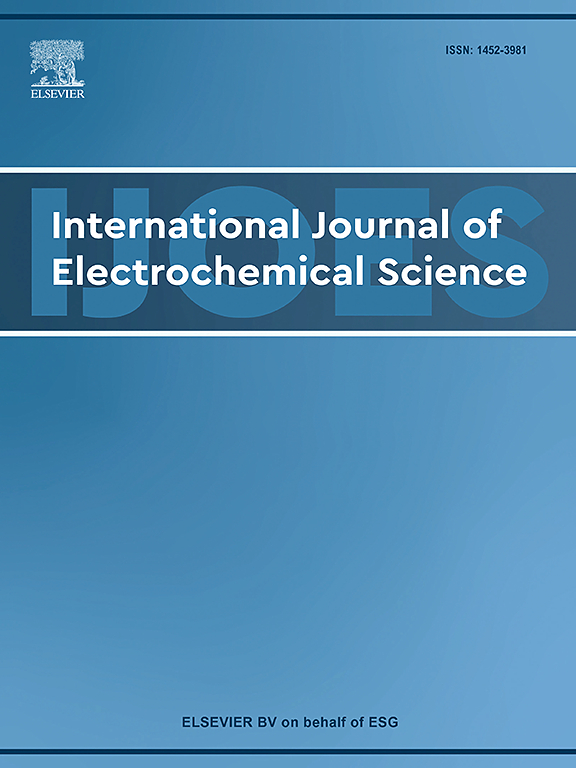微铣削辅助电解加工的数值模拟与实验研究
IF 1.3
4区 化学
Q4 ELECTROCHEMISTRY
International Journal of Electrochemical Science
Pub Date : 2025-01-05
DOI:10.1016/j.ijoes.2025.100934
引用次数: 0
摘要
本研究提出了一种微铣削辅助电化学加工方法,以获得高质量的钛合金(Ti6Al4V)表面。该方法将传统的由NaCl和NaNO3组成的混合电解质替换为复制精度高的NaNO3电解质。微铣刀的切削作用交替去除钛合金表面的钝化膜,保证了电化学加工的顺利进行。建立了Ti6Al4V微铣削辅助电解加工截面轮廓的理论模型,并进行了动态数值模拟和工艺试验。研究了加工电压、进给速度和主轴转速对电流密度和加工深度的影响。结果表明:加工深度随加工电压增大而增大,随进给和主轴转速增大而减小;在进给速度为3 mm/min、加工电压为24 V、主轴转速为2000 r/min的条件下,Ti6Al4V钛合金的表面质量较高,表面粗糙度达到1.785 μm。复合材料加工深度的实验剖面与理论预测吻合较好。本文章由计算机程序翻译,如有差异,请以英文原文为准。
Numerical simulation and experimental study on micromilling-assisted electrochemical machining
This study proposes a micromilling-assisted electrochemical machining method to obtain high-quality surfaces on a titanium alloy (Ti6Al4V). This method replaces the traditional mixed electrolyte composed of NaCl and NaNO3 with a highly replication-accurate NaNO3 electrolyte. The passive film on the titanium alloy surface was alternately removed by the cutting action of the micromilling cutters, ensuring smooth progress in electrochemical machining. A theoretical model of the cross-sectional profile of Ti6Al4V micromilling-assisted electrochemical machining was established, and dynamic numerical simulations and process experiments were conducted. The effects of machining voltage, feed speed, and spindle speed on the current density and machining depth were investigated. The results indicated that the machining depth increased with machining voltage and decreased with higher feed and spindle speeds. At a feed speed of 3 mm/min, processing voltage of 24 V, and spindle speed of 2000 r/min, the surface quality of the titanium alloy Ti6Al4V was high, achieving a surface roughness of 1.785 μm. The experimental cross-sectional profile of the composite processing depth aligned well with theoretical predictions.
求助全文
通过发布文献求助,成功后即可免费获取论文全文。
去求助
来源期刊
CiteScore
3.00
自引率
20.00%
发文量
714
审稿时长
2.6 months
期刊介绍:
International Journal of Electrochemical Science is a peer-reviewed, open access journal that publishes original research articles, short communications as well as review articles in all areas of electrochemistry: Scope - Theoretical and Computational Electrochemistry - Processes on Electrodes - Electroanalytical Chemistry and Sensor Science - Corrosion - Electrochemical Energy Conversion and Storage - Electrochemical Engineering - Coatings - Electrochemical Synthesis - Bioelectrochemistry - Molecular Electrochemistry

 求助内容:
求助内容: 应助结果提醒方式:
应助结果提醒方式:


